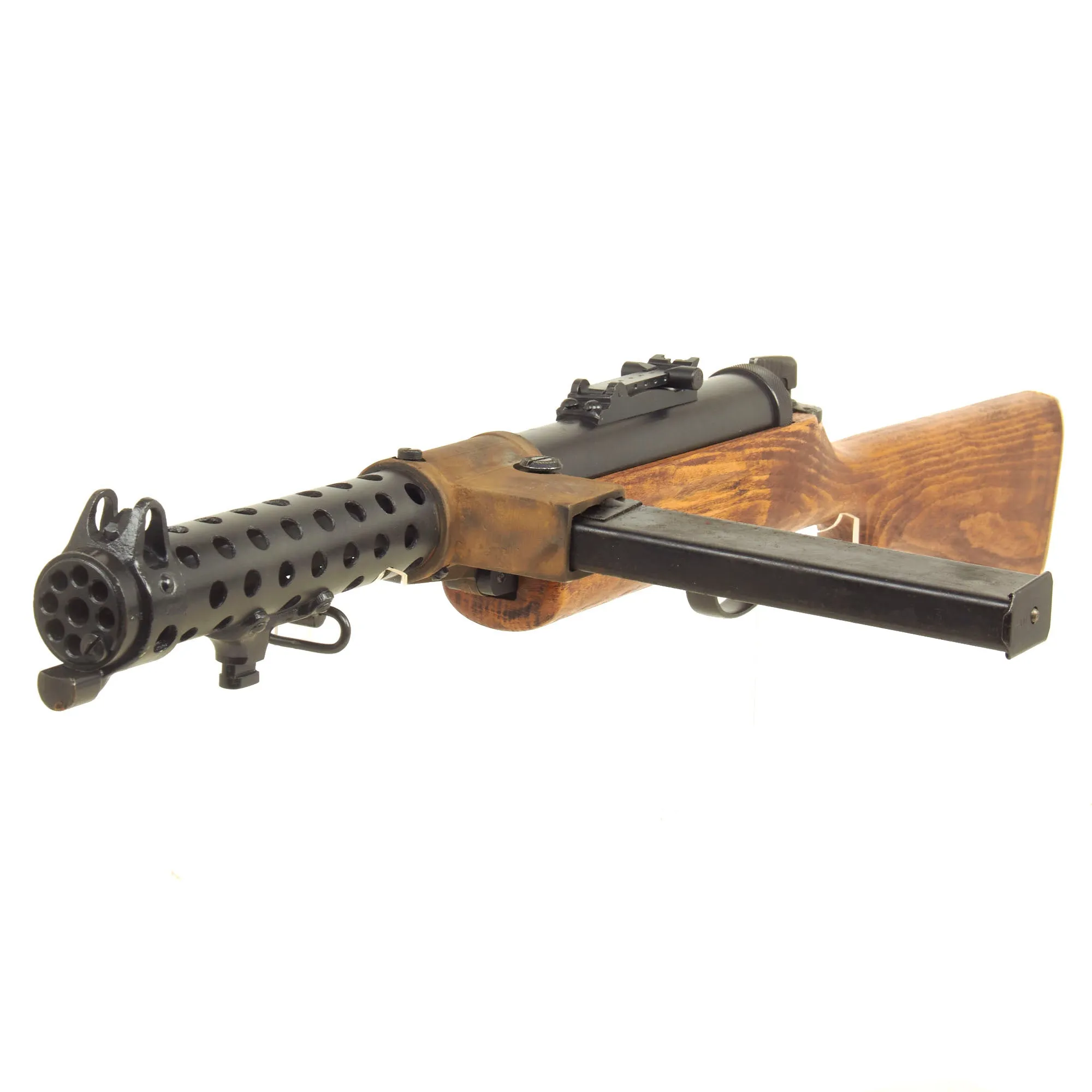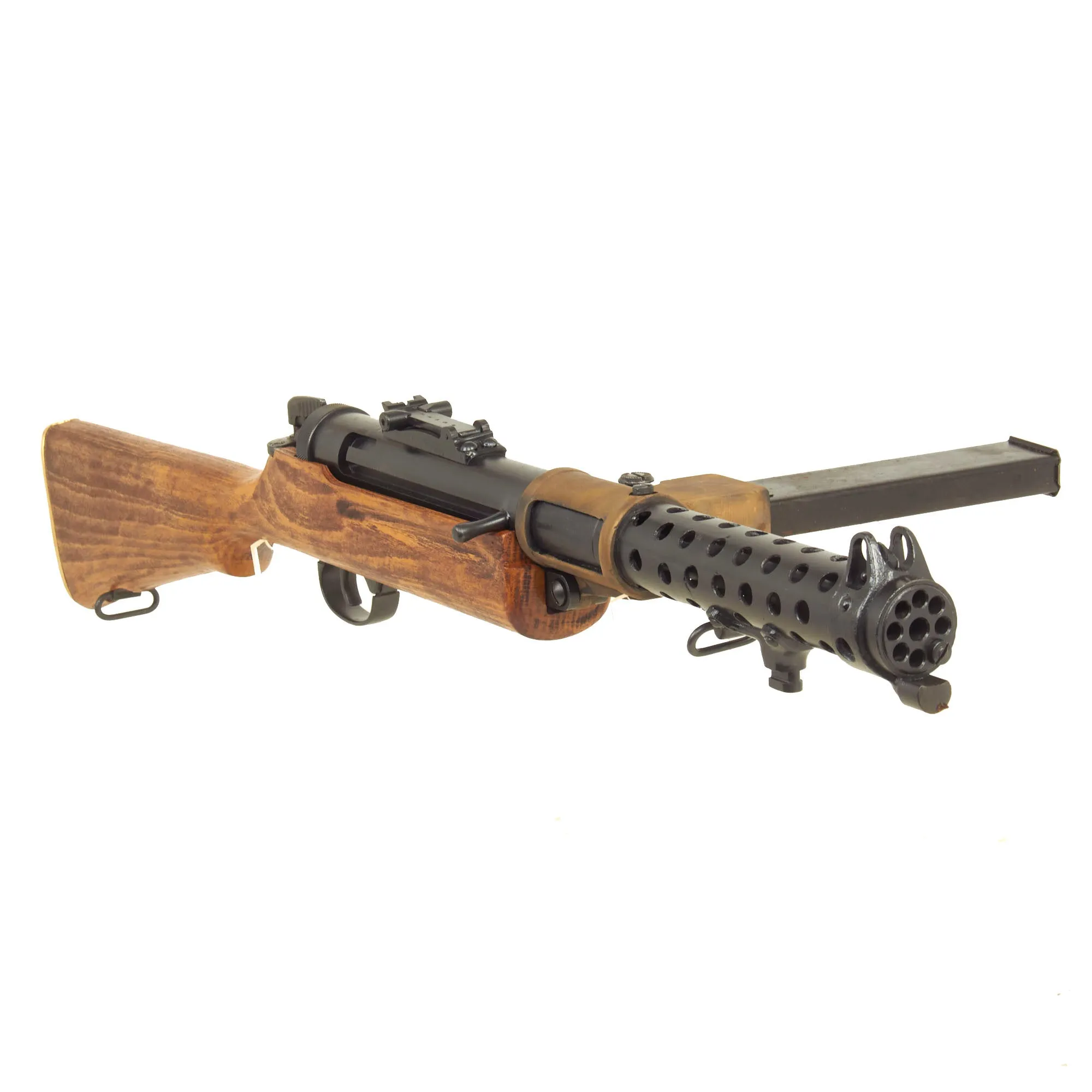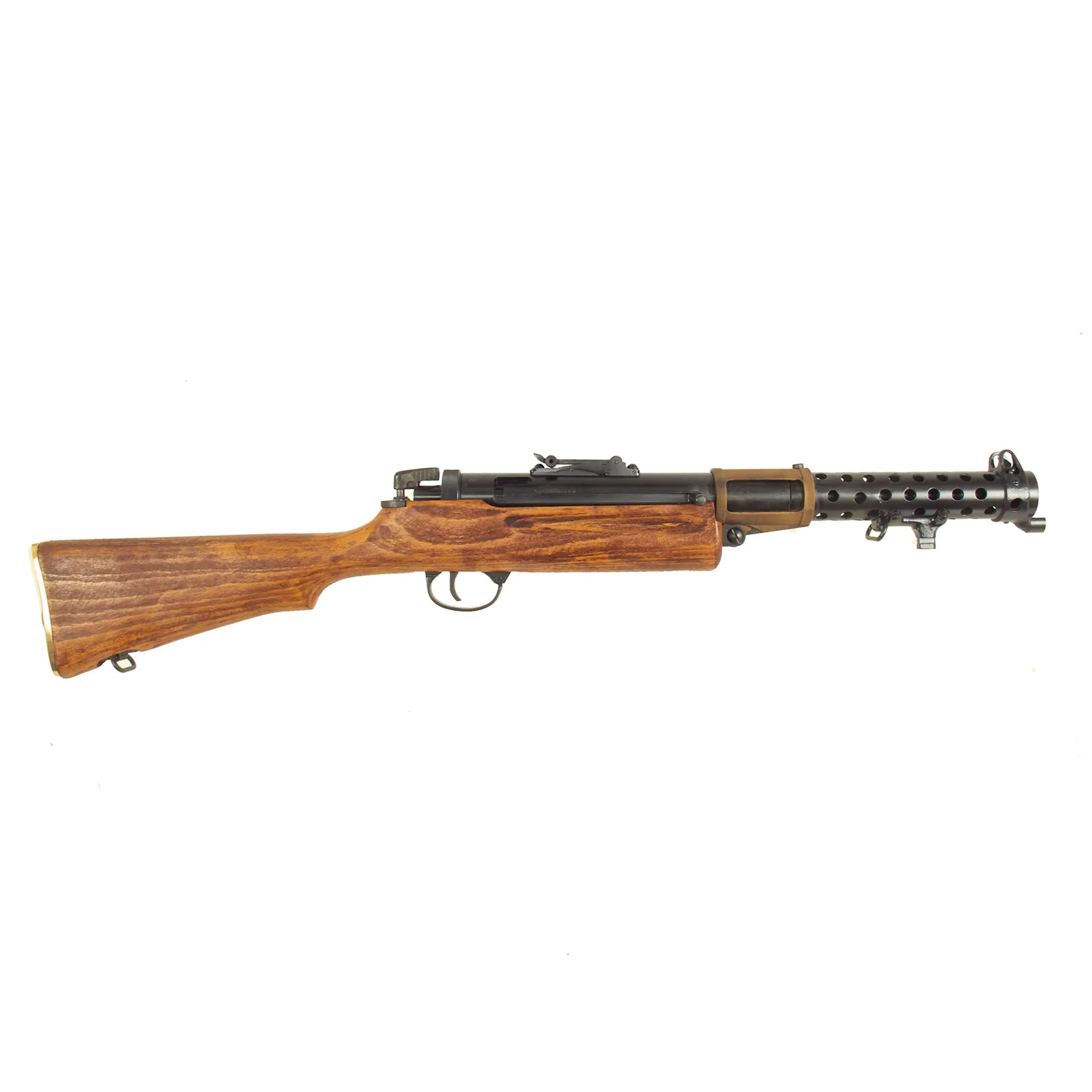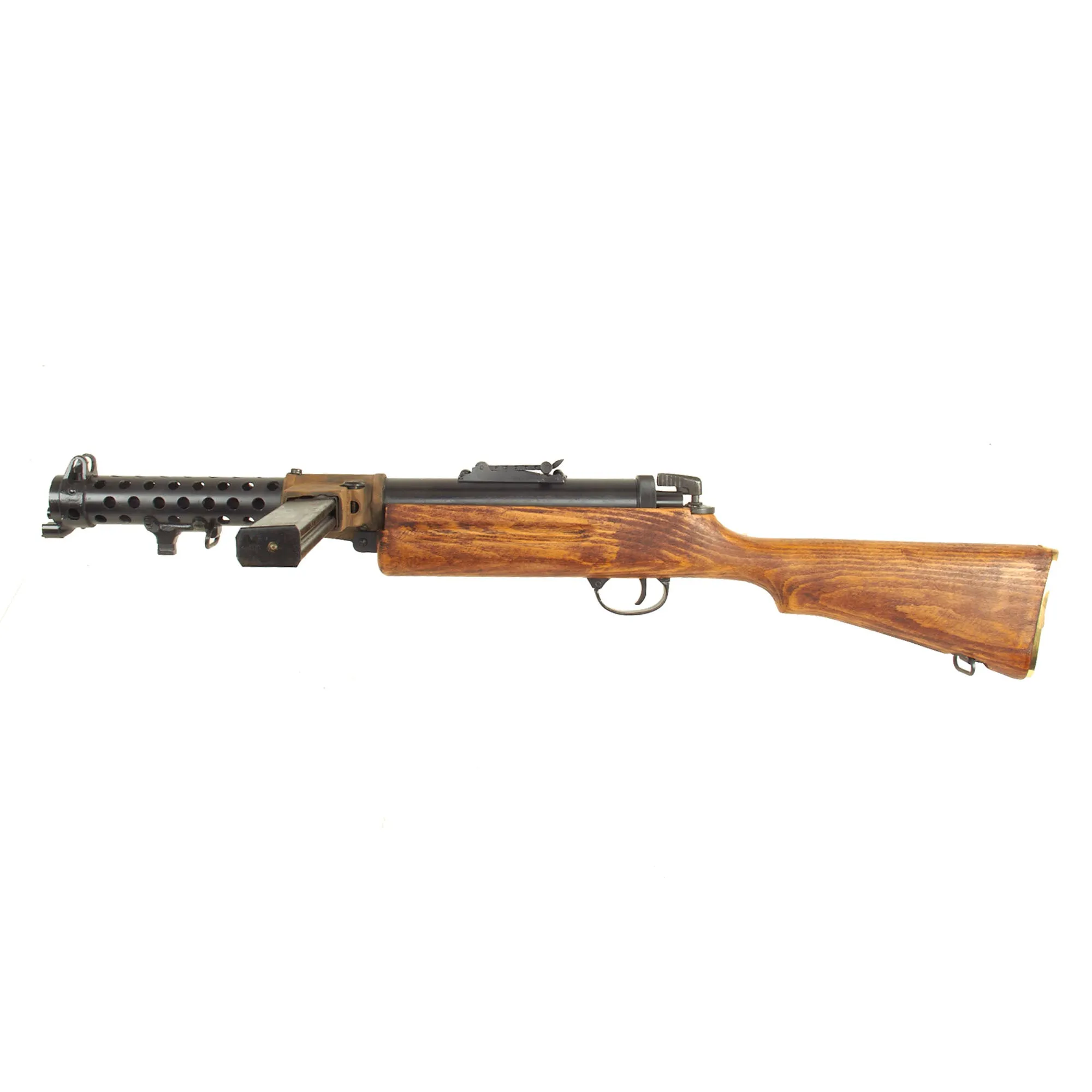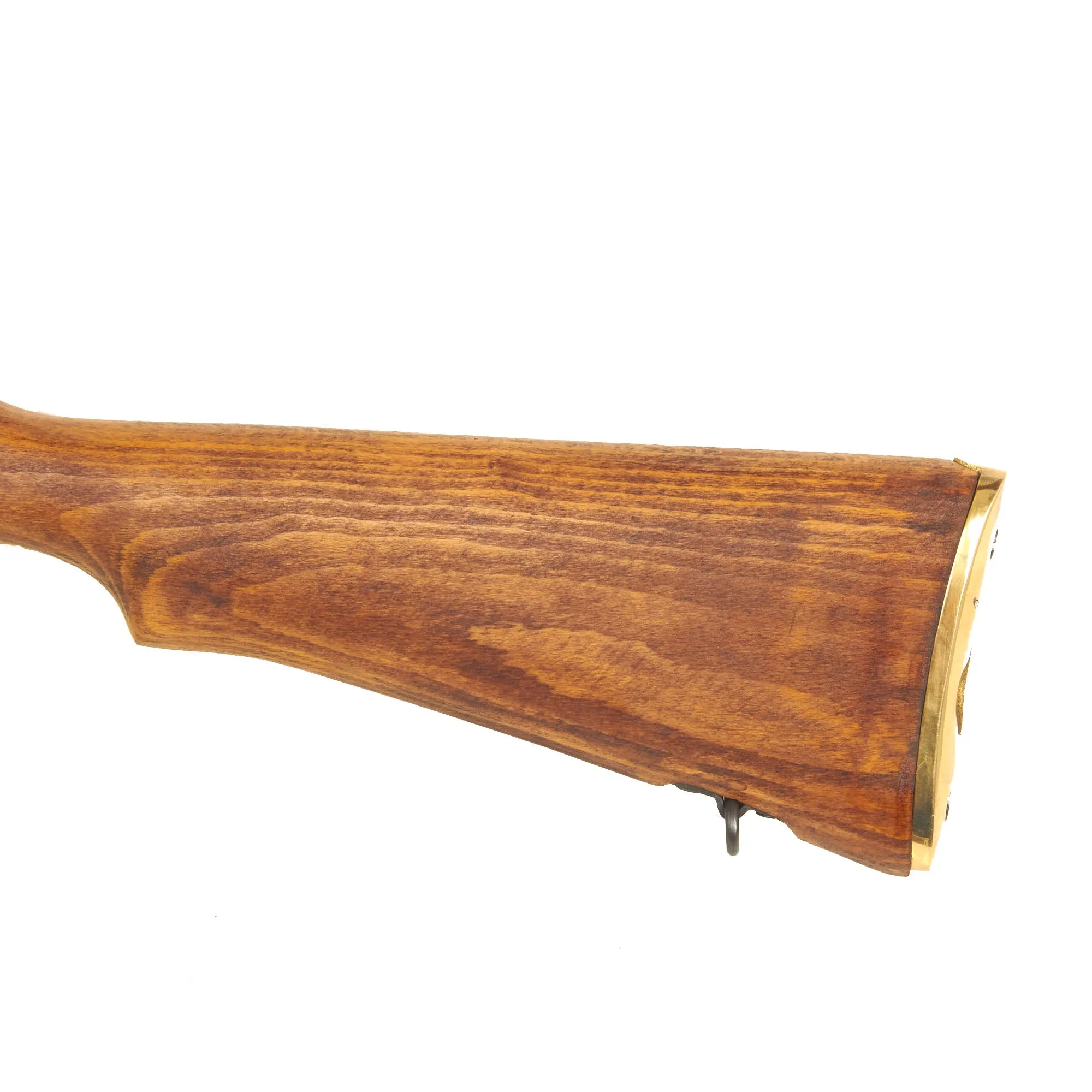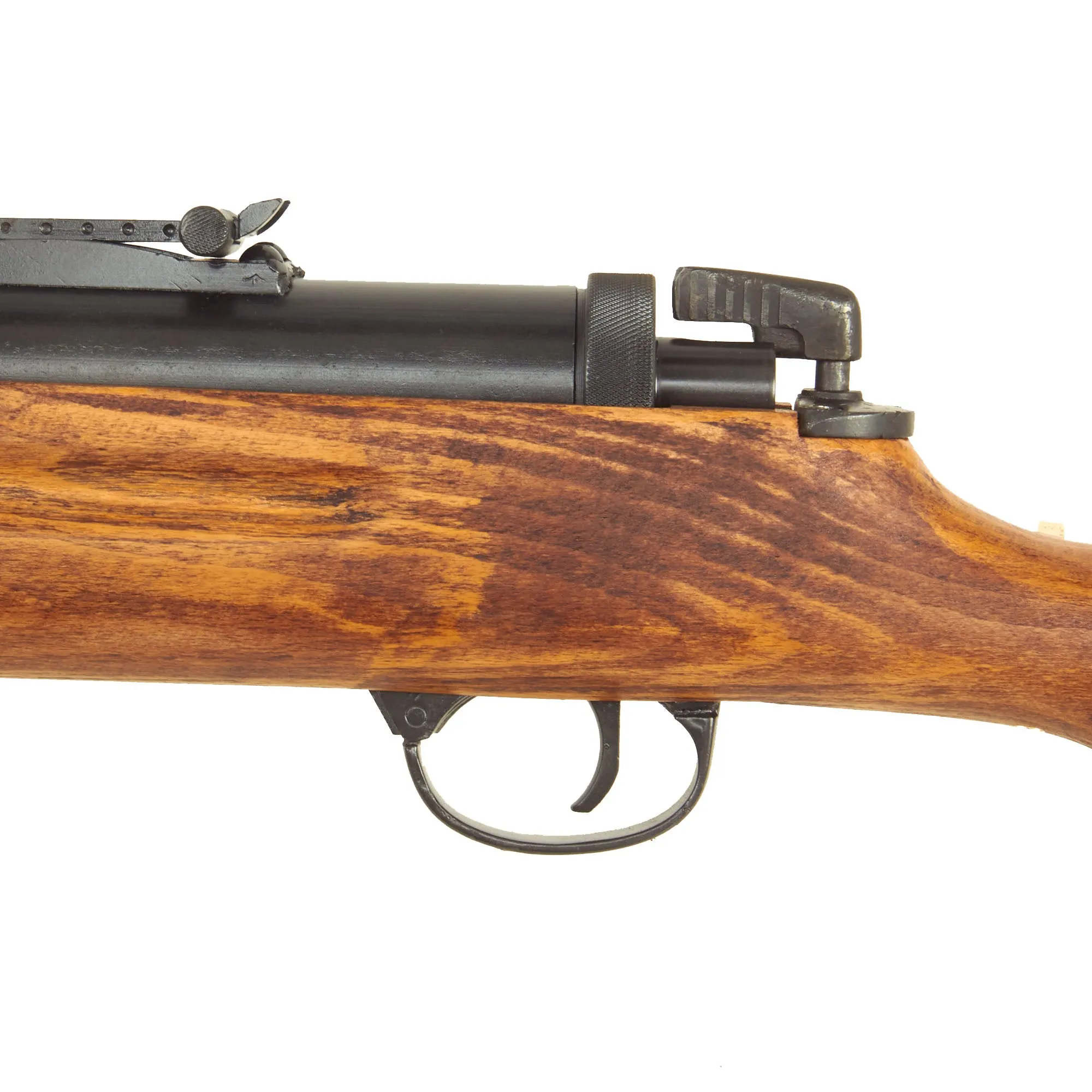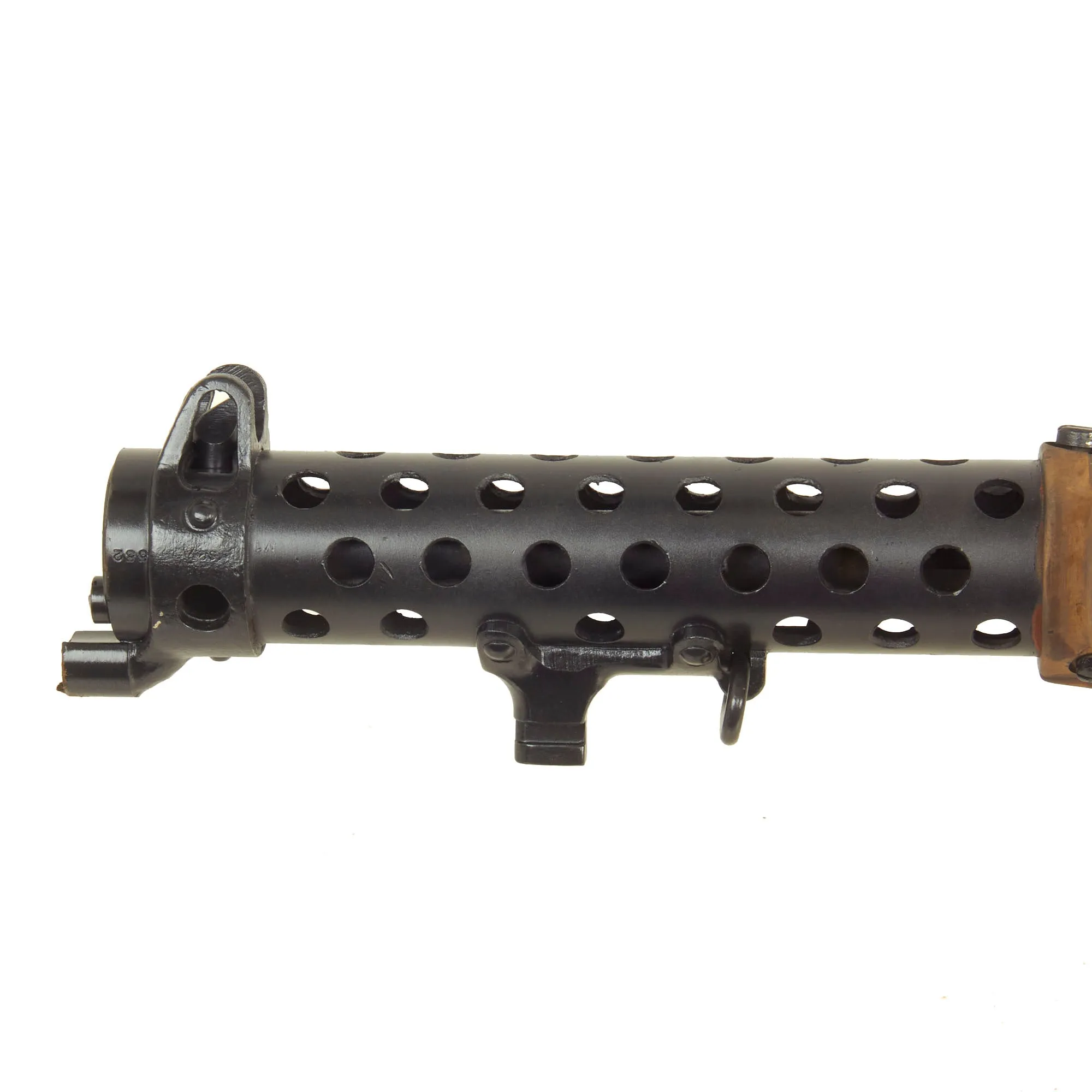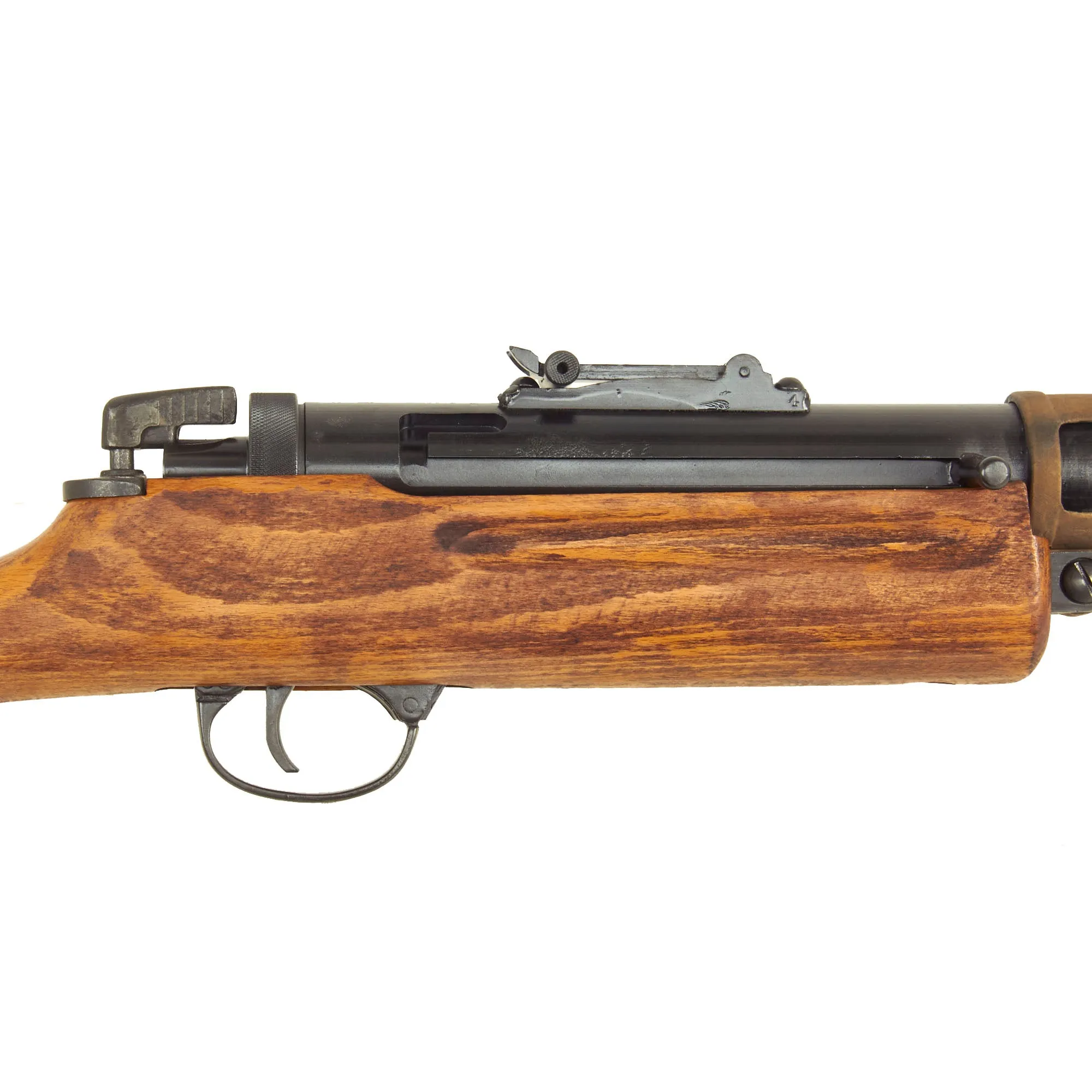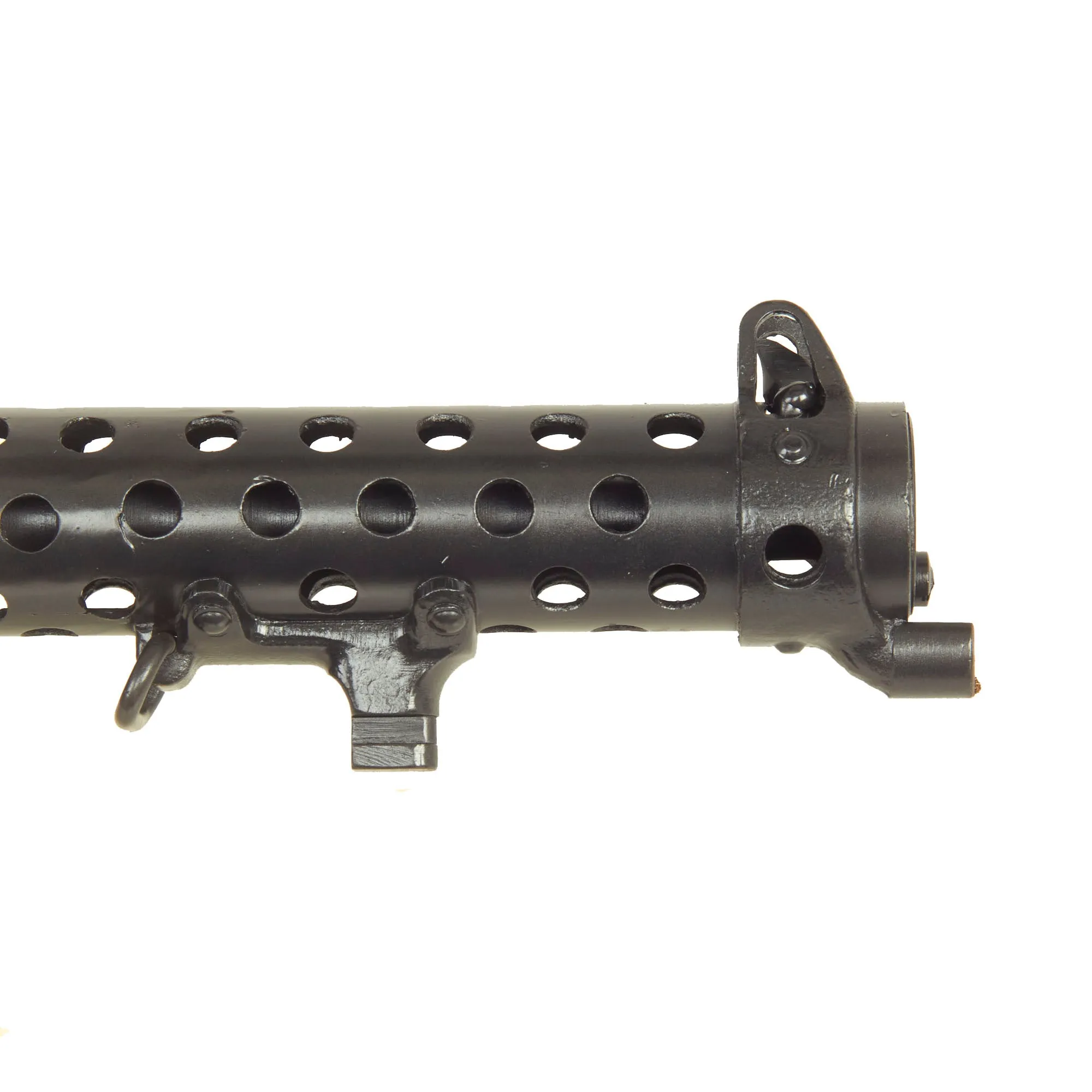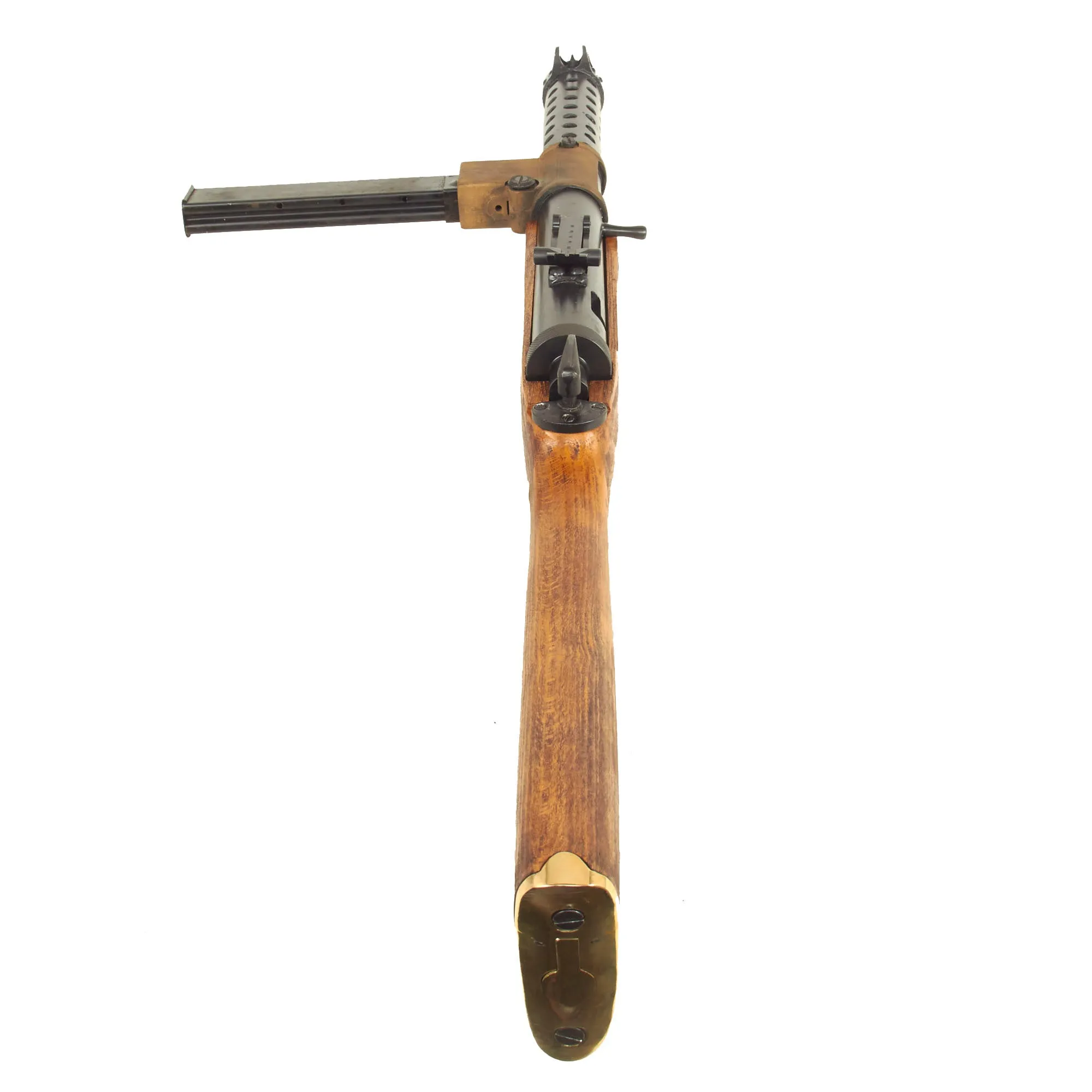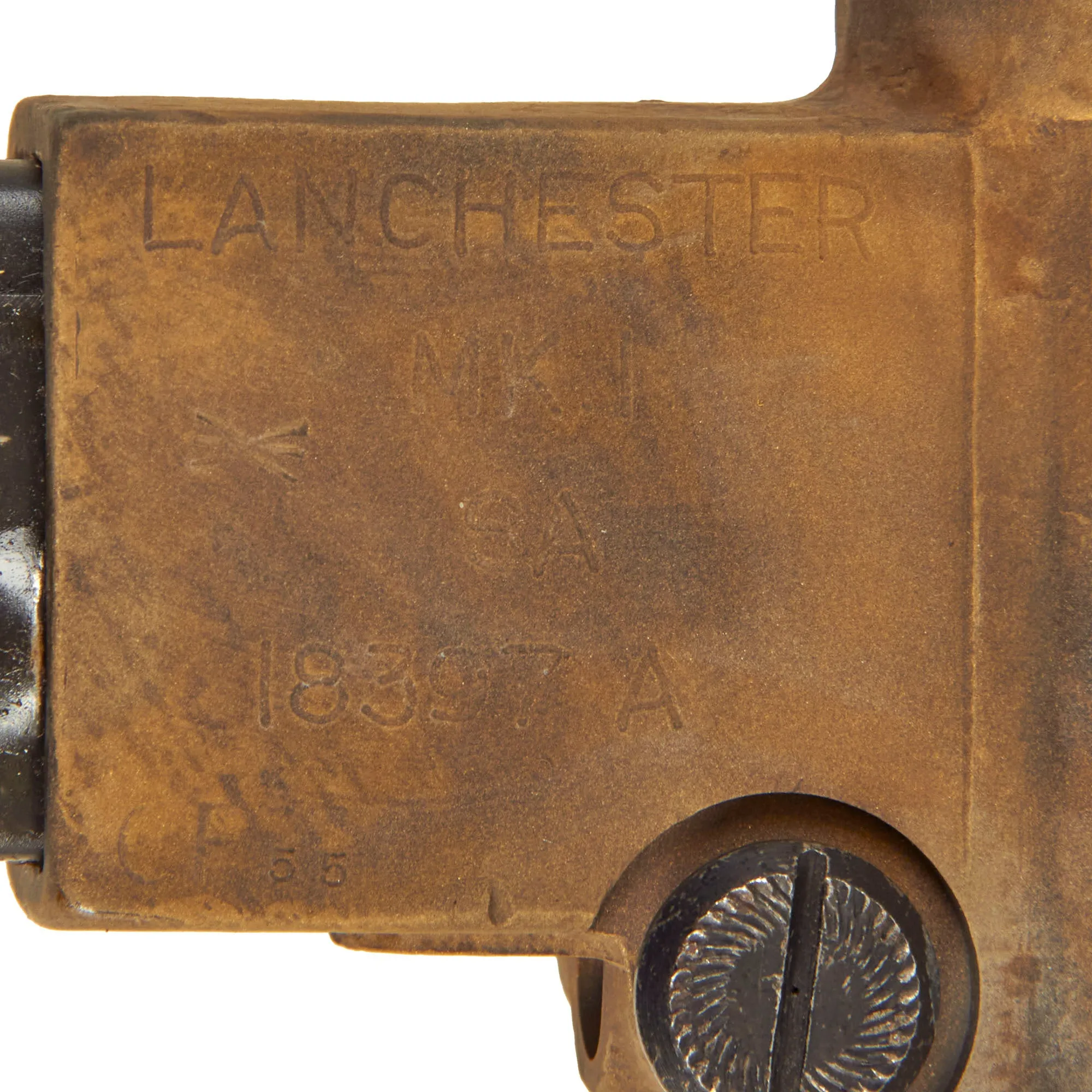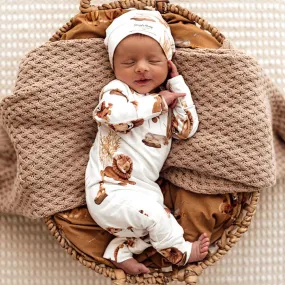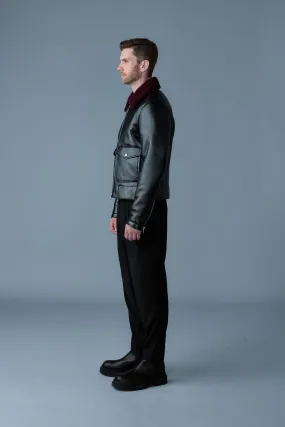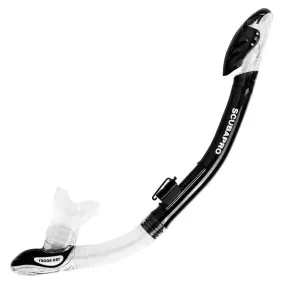Original Items: Very Few Available. One of the best quality British SMGs of WWII, the Lanchester has a full wood buttstock with brass butt plate. A heavy bronze magazine housing and ventilated barrel jacket complete with bayonet lug and support. (Takes Enfield 1907, 1943/44 series bayonets, advertised separately.)
We previously thought that we would never have these again in quantity, but we were able to find some stashed away in our warehouse. These Lanchester SMGs are all in the MkI* pattern, however as with many that were converted, they still retain the early adjustable back ladder sight. Each comes complete with a 20 round magazine (deactivated where required). While these did have a 50 round magazine, they proved unwieldy, especially as they stuck out to the side of the gun.
Markings and configurations do vary slightly. All are built using original parts assembled onto a solid aluminum dummy receiver with a replica barrel in the barrel jacket. These are then fit with post war manufactured arsenal replacement hardwood stocks.
Act now while we still have these available! All are ready to display!
The Lanchester is a submachine gun (SMG) manufactured by the Sterling Armaments Company between 1941 and 1945. It is a copy of the German MP28/II and was manufactured in two versions, Mk.1 and Mk.1*; the latter was a simplified version of the original Mk.1, with no fire selector and simplified sights. It was primarily used by the British Royal Navy during the Second World War, and to a lesser extent by the Royal Air Force Regiment (for airfield protection). It was given the general designation of Lanchester after George Herbert Lanchester, who was charged with producing the weapon at the Sterling Armaments Company.
Following the Dunkirk evacuation in 1940, the Royal Air Force decided it required a submachine gun for airfield defence. With no time available for the usual research and development of a new weapon, it was decided to create a direct copy of the German MP 28. The British Admiralty decided to join with the RAF in adopting the new weapon, and played a key role in its design. Ultimately, it was within the Royal Navy that most of the Lanchesters that were produced went into service.
The British copy of the MP28 was given the general designation of Lanchester after George Herbert Lanchester, who was charged with producing the weapon at the Sterling Armaments Company, the same company that later produced the Sterling submachine gun.
The Lanchester was envisioned as a weapon used for guarding prisoners and accompanying naval landing and assault parties. It was a very solid, well-made submachine gun of high-quality materials, in many ways the complete opposite of its direct contemporary, the Sten.
The Lanchester had a heavy wooden butt and stock, a machined-steel action and breech block, a magazine housing made from solid brass (later steel) and a mounting on the muzzle for use of a long-bladed 1907 bayonet. The rifling differed from the German original in details to accommodate various lots of 9mm ammunition then being acquired for service use.
Produced in two versions, Mk.1 and Mk.1*. The Mk.1* was a simplified version of the original Mk.1, which omitted the fire mode selector (full automatic only) and used simplified sights.




